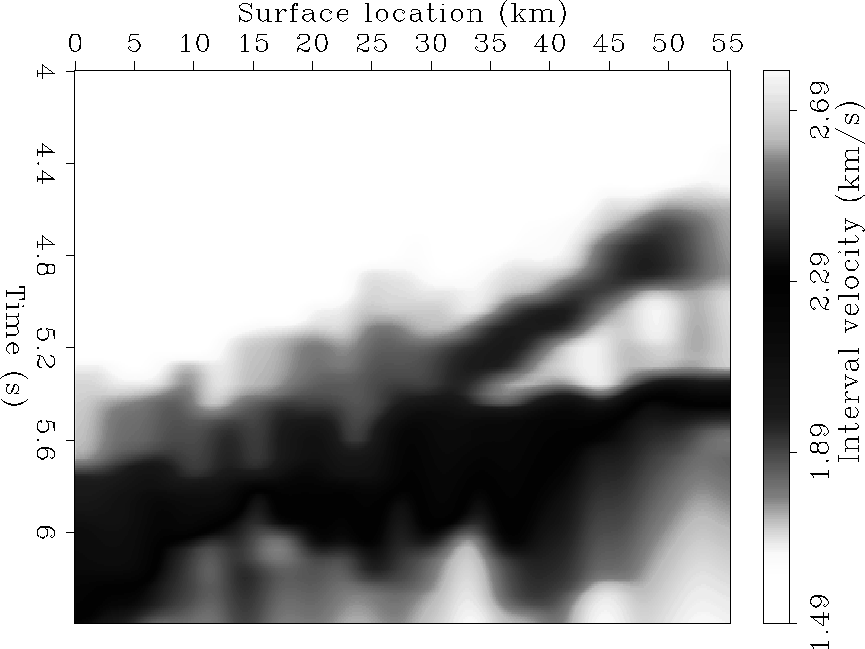




Next: Comparison
Up: Sinha & Biondi: Comparing
Previous: Sinha & Biondi: Comparing
Prestack migration is necessary before AVO analysis. Most of the
present migration algorithms not only try to focus the reflections on the
subsurface but also strive to preserve the amplitude for subsequent
amplitude studies. A migration/inversion method developed by
Lumley 1993 estimates the angle dependent
reflectivity at each subsurface point by using least-squares Kirchhoff
migration followed by a linearized Zoeppritz elastic parameter inversion for
relative contrasts in compressional and shear wave impedance. Another
migration algorithm is based on the wave-equation method which uses the Double
Square Root equation (DSR) for downward continuation. Migration methods based
on DSR operators have been applied to 2-D prestack migration for a long time
Claerbout (1984) . Only recently computationally efficient methods to
continue 3-D prestack data have been presented Biondi and Palacharla (1995). The objective of this paper is to compare the results of the above two algorithms.
The data are taken from the gas hydrate region in Blake Outer Ridge on offshore Florida
In a previous study Ecker (1998), the prestack migration is performed with the
Kirchhoff migration/inversion.
In this paper the same prestack data is migrated
by the DSR wave-equation migration as explained in Prucha et al1999.
Vel-hydrate-paper
Figure 1 The velocity model used for the two migration methods.










Next: Comparison
Up: Sinha & Biondi: Comparing
Previous: Sinha & Biondi: Comparing
Stanford Exploration Project
4/20/1999

